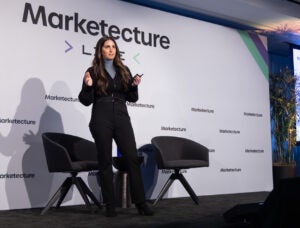 Time Inc. is in a tough spot after its spinoff from Time Warner Inc.
Time Inc. is in a tough spot after its spinoff from Time Warner Inc.
It begins its run as an independent public company saddled with $1.3 billion in debt and revenue that has steadily declined with only two quarters of sequential growth in the past six years.
In related (and unfortunately timed) news, the publisher’s erstwhile parent is reportedly in advanced talks to acquire a large stake in youth publisher Vice Media, as Sky News reported Monday. Time Warner’s investment would value Vice at an estimated $2.2bn.
But Time Inc. will not go down without a fight.
Its private exchange – built on Google’s DoubleClick Ad Exchange – was relaunched globally in February. (The platform replaces a US-only version rolled out last September.) Time Exchange will target the 55 million households (116 million global uniques) the network reaches to be divided into audience segments and sold programmatically to advertisers. Its relaunched websites for the Fortune and Money brands are also keeping with the times by using native advertising in concert with standard display.
But the real opportunity may come from the company’s investments in video content and advertising, and the higher CPMs associated with targeted pre-roll video, say media industry watchers. Time Inc. is certainly trying to step up its game with new programming like celeb show “PEOPLE Now” and home makeover series “Eyesore,” sports-related video on new property 120 Sports and partnerships with distributors that include Roku Inc. and Dailymotion.
To reach the next level, Time Inc. must invest further in distribution as well as production.
“New media companies, like Mashable and BuzzFeed, tend to focus on post-production activities and making the video go viral,” said Steve Goldberg, digital practice lead at Empirical Media, a consultancy focused on media sellers. “Traditional media companies, like Time Inc., tend to focus more on production quality, editing and leveraging their assets. There should be a balance between these two aspects of video production. We believe Time has a long way to go to get that balance right. A lot more can be done to drive more meaningful views.”
What are some ways to do this? Jim Spanfeller, CEO of Spanfeller Media Group, explained that to successfully increase and integrate video content into a site’s business model requires investment in several areas. To start, Time Inc. will need to create quality video content – a lot of it.
“Publishing on the Web is a harsh mistress in the sense that in order to run a large-scale success, you need to put out a lot of content,” Spanfeller said. “This is as true in video as it is in text.”
The video should also be front and center in order for the end user to get accustomed to seeing this format. And the content should flow to users beyond the core website visitor.
“This includes pushing your videos out into different networks, whether it’s clips on Facebook, Twitter or YouTube. There’s plenty of ways to get content – whether it is textual data or video – in front of a lot more people and use that as a hook to get people to sample the site,” Spanfeller said.
Of course, Time Inc. faces challenges beyond mastering video distribution in a digital age – namely debt, cost structure and print circulation.
“Joe Ripp and Norm Pearlstein (Time Inc.’s chief executive and chief content officer, respectively) have taken great first steps,” Goldberg said, “but there is another level of restructure and cost sharing they are going to have to do in order to thrive.”













